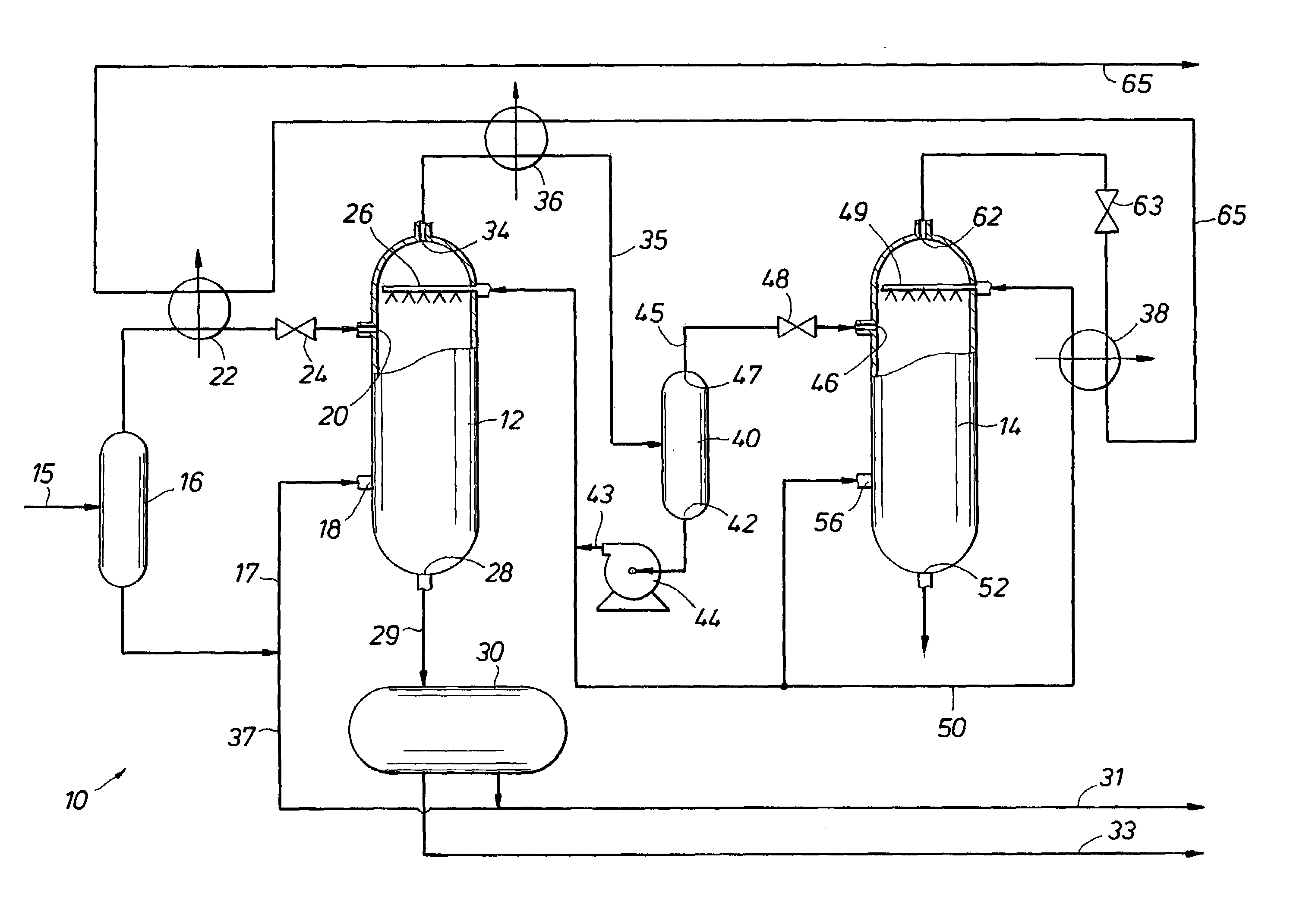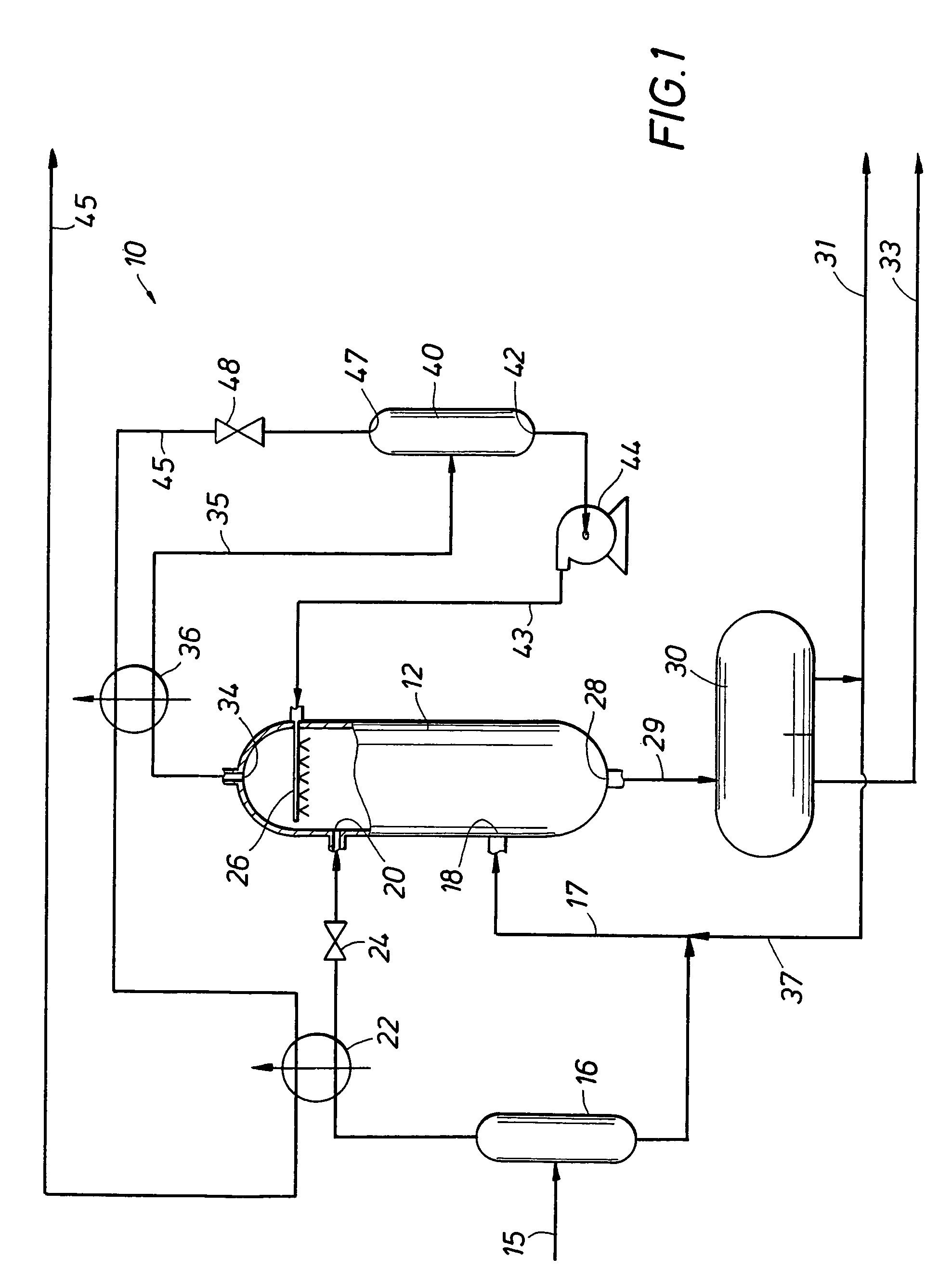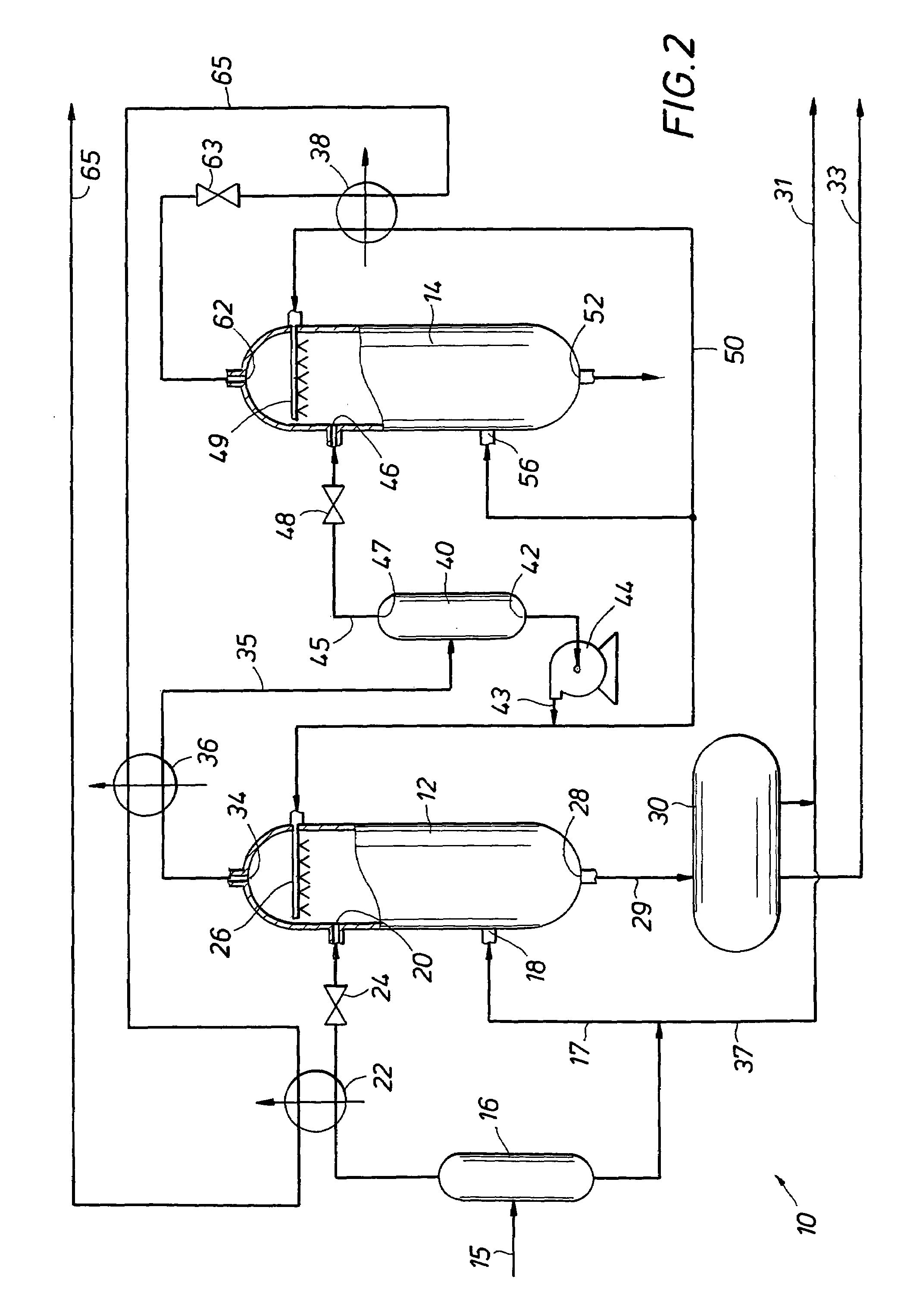Removing contaminants from natural gas
a technology of natural gas and contaminant, which is applied in the direction of separation processes, liquefaction, lighting and heating apparatus, etc., can solve the problems of premature failure of such systems, high cost, and high cost of existing dehydration and gas sweetening processes
- Summary
- Abstract
- Description
- Claims
- Application Information
AI Technical Summary
Problems solved by technology
Method used
Image
Examples
Embodiment Construction
[0011]The present invention represents an improvement on the process and device discussed in International patent application publication No. 03 / 062 725.
[0012]Contaminants from a natural gas feed stream is removed by forming a solid of the contaminant and suitably subsequently melting the solid contaminant.
[0013]When the contaminant is water, one embodiment of the present invention relates to a process for dehydrating a natural gas feed stream.
[0014]When the contaminant is a sour species, for example hydrogen sulphide or carbon dioxide, one embodiment of the present invention relates to a process for sweetening the natural gas feed stream.
[0015]In another embodiment of the present invention relates to a process for sequentially dehydrating and sweetening the natural gas feed stream.
[0016]To this end the process for removing contaminants from a natural gas feed stream including water according to the present invention comprises the steps of cooling the natural gas feed stream in a fi...
PUM
| Property | Measurement | Unit |
|---|---|---|
| Temperature | aaaaa | aaaaa |
Abstract
Description
Claims
Application Information
 Login to View More
Login to View More - R&D
- Intellectual Property
- Life Sciences
- Materials
- Tech Scout
- Unparalleled Data Quality
- Higher Quality Content
- 60% Fewer Hallucinations
Browse by: Latest US Patents, China's latest patents, Technical Efficacy Thesaurus, Application Domain, Technology Topic, Popular Technical Reports.
© 2025 PatSnap. All rights reserved.Legal|Privacy policy|Modern Slavery Act Transparency Statement|Sitemap|About US| Contact US: help@patsnap.com



